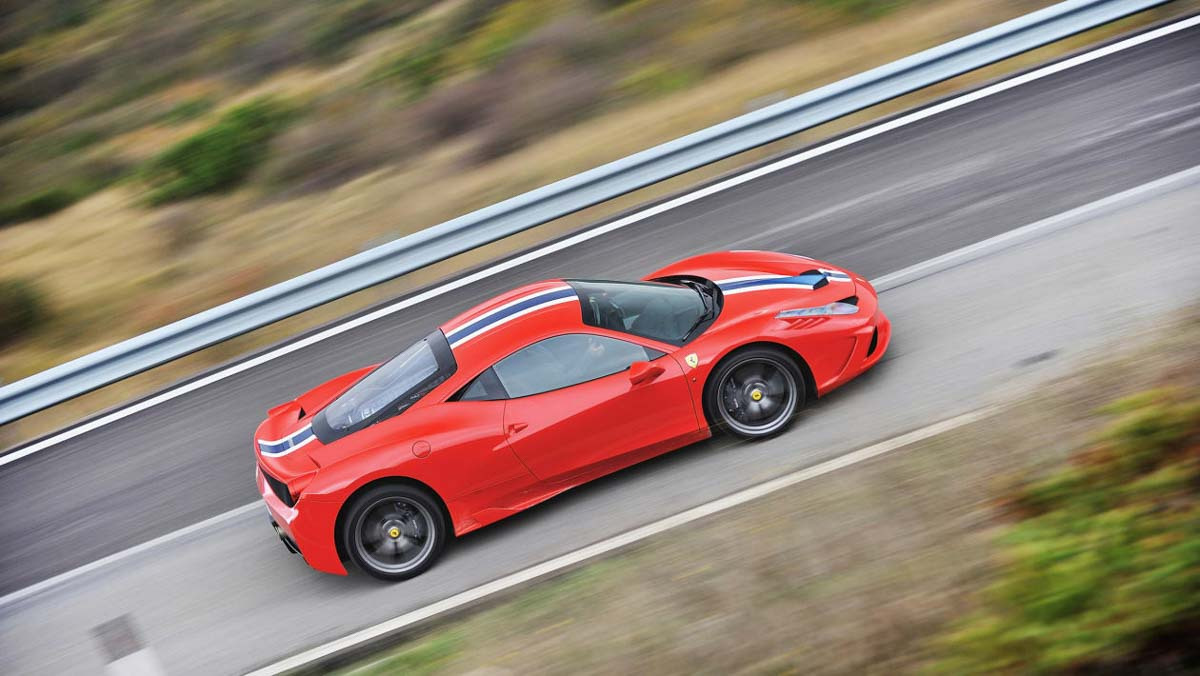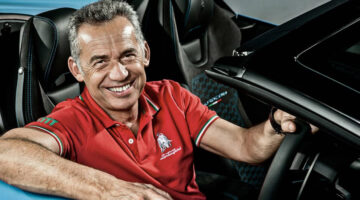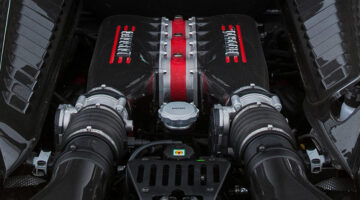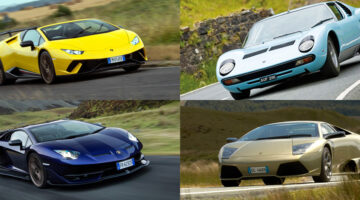When Italian car manufacturers get it right passion, character and style flows through their creations. Here are our 10 favourite Italian cars
Trying to rank the best car-producing nation would be a fruitless task – virtually every country and every manufacturer within has the capacity to surprise and delight, and we’d be deeply suspicious of any dream garage that didn’t include a mix of cars from all over the world.
We’d also be suspicious though if that dream garage list didn’t include at least one or two cars from Italy. Whatever combination of thousands of years of cultural, societal, geographical and political factors that spawned the Italian motor industry has resulted in some of the world’s greatest cars, and some of the most recognisable brands on the planet.
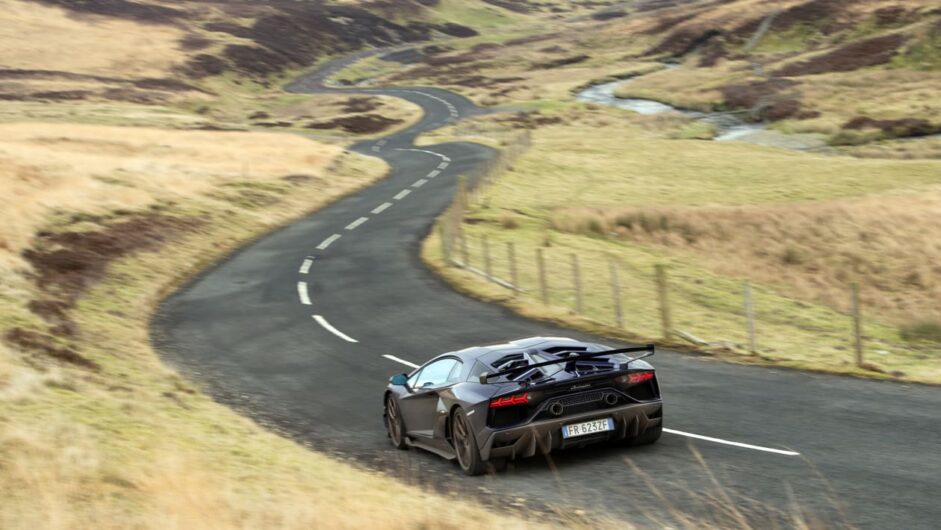
A definitive list of the best Italian cars would be almost impossible, but with a few careful restrictions – such as models that evo has driven in print and online since it started in 1998, and excluding some of the more exclusive options (such as Ferrari’s hypercars, Maserati MC-12s and anything designed to run on slicks) we can start forming the basis of a workable roster of cars.
Below then is a section of the best in no particular order, spanning the surprisingly affordable to the rarest and most desirable Italian cars evo has sampled. Oh, and we’ve probably missed one or two, so do let us know via our Twitter, Facebook and Instagram pages.
Top 10 best Italian cars
- Lamborghini Huracan Evo RWD review
- Ferrari 458 Speciale review
- Abarth 124 Spider review
- Ferrari 812 Superfast review
- Abarth 595 Essessse review
- Alfa Romeo Giulia Quadrifoglio review
- Ferrari F355 review
- Fiat Panda 100HP
- Lamborghini Aventador SVJ review
- Pagani Zonda
In detail
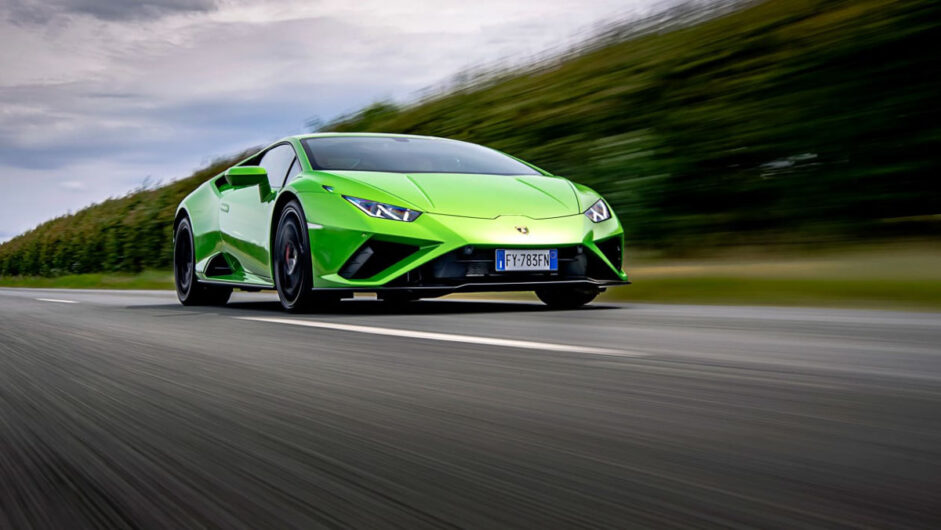
Lamborghini Huracan Evo RWD
It’s taken tweaks here and there and several years on sale, but Lamborghini might just have nailed the junior supercar formula with its Huracan Evo RWD. As the name suggests it benefits from the Evo tweaks applied to other Huracans recently, but also powers its rear wheels alone.
Of these two fundamentals, it’s the rear-drive setup that has probably had the greatest effect. Without the need to handle power going through the front wheels the steering has newfound clarity, and the rear wheels are still more than up to the task of deploying the V10’s power to the road.
That V10 itself sounds incredible and its naturally-aspirated nature gives it a linearity that feels way more friendly than you’d expect given the 610bhp peak, while the dual-clutch gearbox is both fast and smooth. Combined, all these factors make the Evo RWD an intuitive car to drive, while that V10 alone gives it more character than any immediate rival – this is a supercar that finally stands real comparison with Ferrari F8s and McLaren 720Ss.
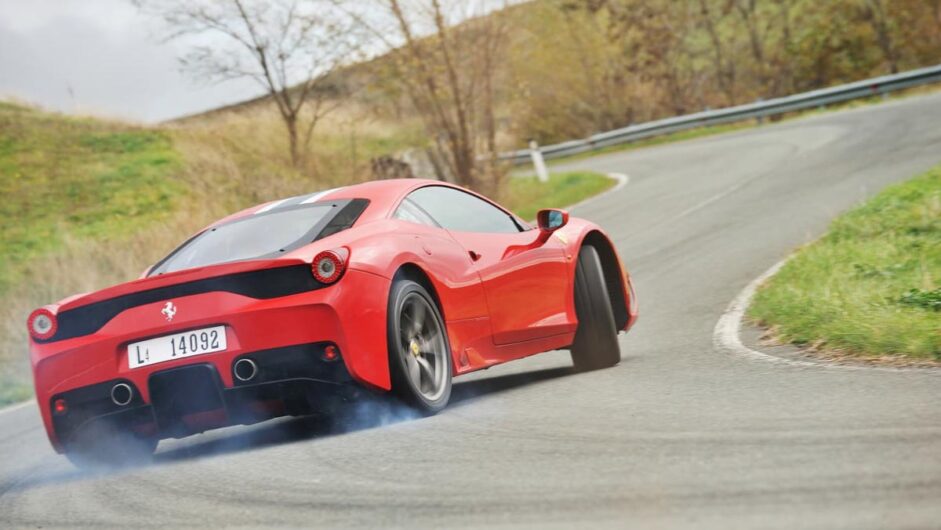
Ferrari 458 Speciale
There is perhaps no other modern-era Ferrari as exciting as the 458 Speciale. It feels like a focal point for everything the company does well – incredible engines, beautifully-balanced chassis, and stunning visuals, and is undoubtedly one of the most complete performance cars evo has ever tested.
Ferrari had shown moments of genius in the run up to the Speciale – the 360 Challenge Stradale and 430 Scuderia that had come before were intoxicating cars in their own right. But the 458 itself was such a complete package, bolstered by sophisticated electronics and one of the best dual-clutch transmissions on the market, that applying the road-racer formula was only ever going to result in something spectacular.
There’s an argument to be made that the car that followed, the 488 Pista, goes even further up each of those paths. But it lacks one crucial element that seals the Speciale package: that car’s screaming naturally-aspirated V8. With 133bhp per litre and a 9000rpm redline, it’s simply one of the great production car engines.
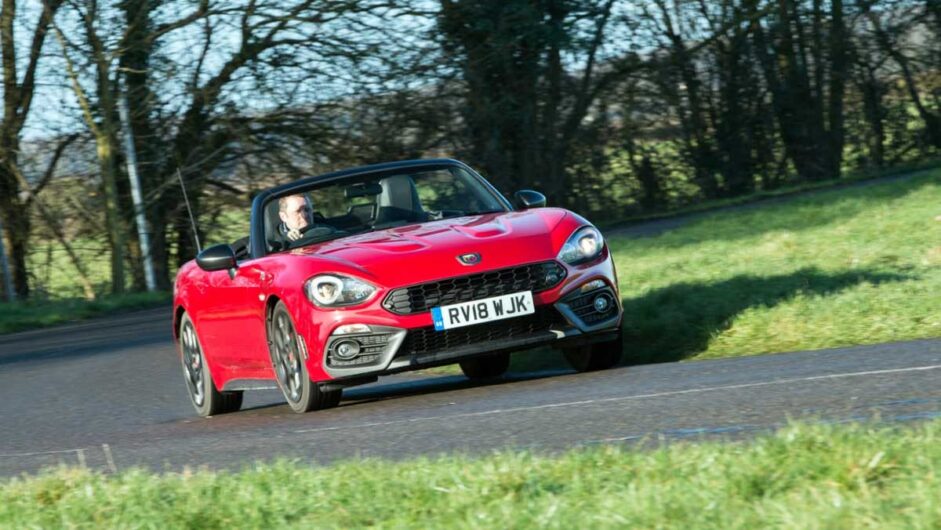
Abarth 124 Spider
Until Mazda updated its MX-5 with a more powerful engine, and you tick a few extra boxes in the dealership to tighten up the suspension, the Abarth 124 Spider was the best “MX-5” you could buy – Fiat and Abarth’s roadster being a joint project with Mazda and built in the same factory in Hiroshima.
Where the regular Fiat 124 was a little soft for our tastes, the Abarth variant tightened things up nicely, and packed what is now a characteristic of Abarth vehicles, a turbocharged 1.4-litre engine with a naughty exhaust note. The combination of good mid-range torque, the vocal exhaust and the MX-5 and 124’s natural good balance made for a wonderfully satisfying package.
While it retained some of the limitations of the MX-5, such as a tight cabin, the firmer setup made it a little less wayward too, despite the extra power. The styling’s an acquired taste, but the overall package was great fun, and it’s a shame it lasted only a couple of years on the market.
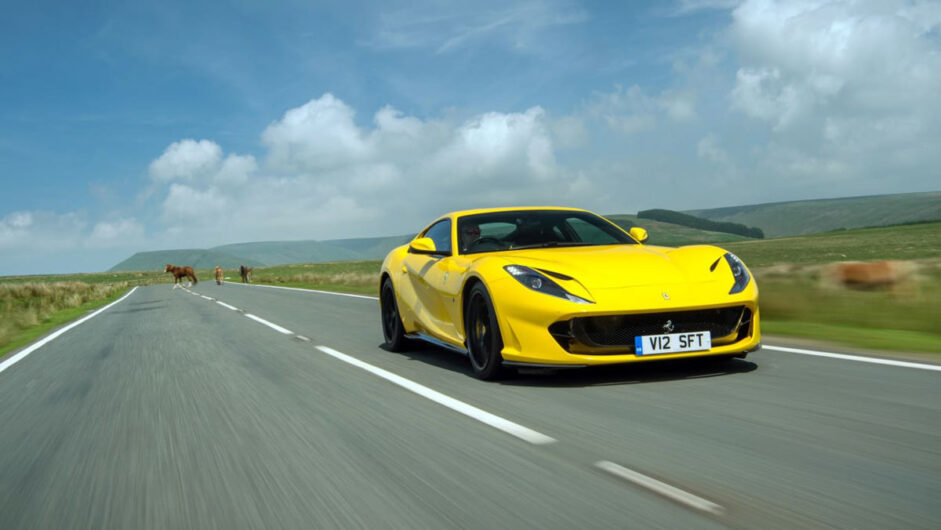
Ferrari 812 Superfast
Like the 458 Speciale, the Superfast has a super-broad range of talents that would make it a wonderful car even with a distinctly average engine under its long bonnet, but is elevated to new heights by its actual powerplant, a 6.5-litre, 789bhp, naturally-aspirated V12.
That engine is a work of art – whether you use it to power a car, sing a symphony or just bolt it to a plinth and stare at it. Derived from the engine first introduced in the Enzo, it’s a perfect example of why it’s difficult to see electric motors ever matching combustion power for emotive value; all the two-point-something 0-60s in the world count for nought against the thrill of extending the 812 to its 8500rpm power peak.
The 812’s styling is an acquired taste even though the car is undoubtedly a dramatic thing to behold. The cabin, and the way the V12 settles down at a cruise, make the Superfast a genuine grand tourer too. Its ability to cover distance in comfort and then wow you with its abilities at your destination, it’s a mighty combination.
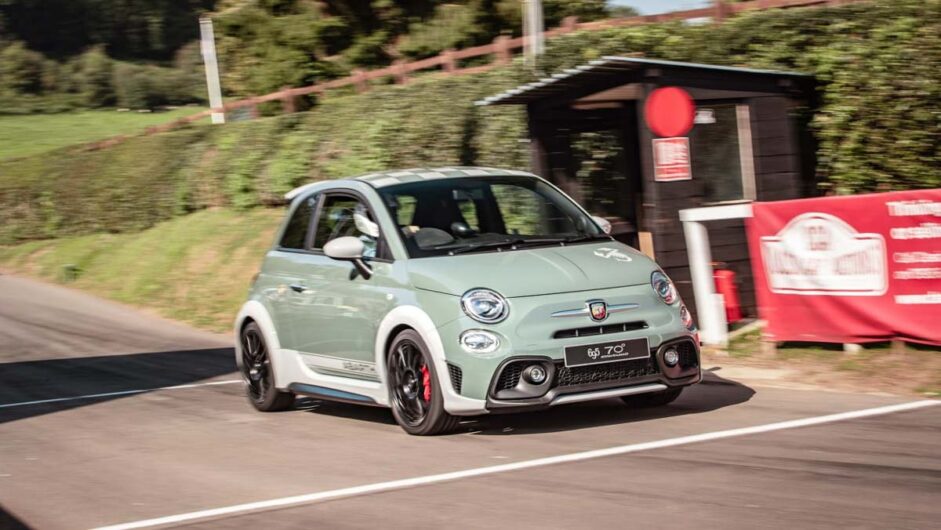
Abarth 595 Esseesse
The 124 might have had some Japanese blood, but the Abarth variants of the 500 are all Italian through and through. Of them all, the most recent 595 Esseesse is probably the best, and while there are better hot hatchbacks available on the market, the 595 has a depth of character and a pure sense of fun that very few can match.
In purely objective terms the 595 isn’t without its faults. Not many can get on with the driving position, the ride quality is very firm and in terms of pure ability it’s a long way off say, a Fiesta ST. But the rowdy engine and short-throw transmission (like that of the Panda 100HP further down) are great fun to use and on smoother roads it feels compact and agile.
It’s also got the vibe of an exotic car in miniature which really appeals. From the open-piped growl at idle, to the excellent detailing (with touches like slim carbon-backed Sabelt seats, proper knurled metal pedals, ball-topped gearshift and Alcantara wheel), you can kid yourself it’s a tiny slice of Ferrari or Lamborghini for a fraction of the price.
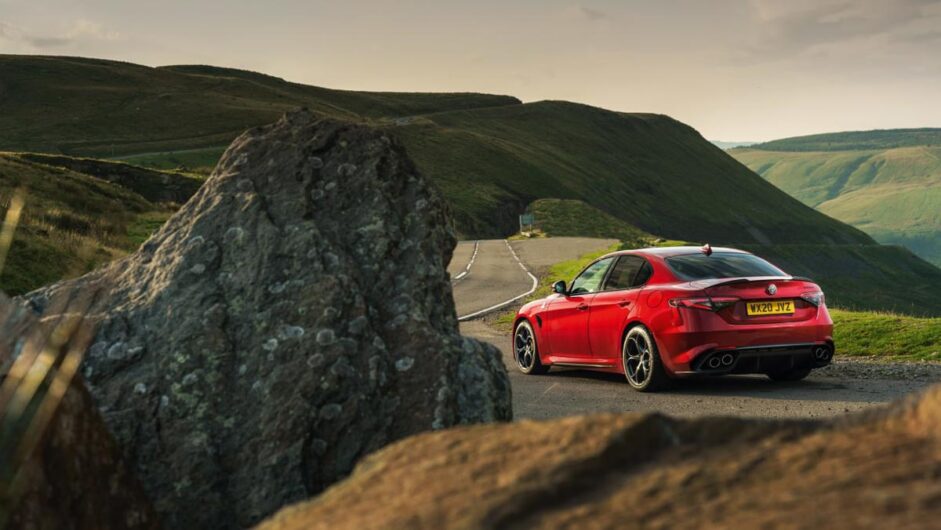
Alfa Romeo Giulia Quadrifoglio
Cars like the BMW M3 and Mercedes-AMG C63 have never been more powerful, more capable or easier to use every day – yet the Alfa Romeo Giulia Quadrifoglio introduced in 2016 still had the measure of them in almost every way that counted, and remains right at the top of its game in 2020.
Even the most ardent Alfa Romeo fans would admit their products have been hit and miss over the years, and the Giulia itself has had a few quality niggles from the outset, but there probably hasn’t been an Alfa quite so competitive since the 1960s. Even in standard 2-litre petrol form it drives well, floating over poor surfaces, turning into corners with agility and powering out of them with balance, but the Quadrifoglio really is special.
Few cars with this much power (503bhp) make it feel so usable, in the dry at least (its sticky Pirellis don’t hold on quite so well on damp roads), letting you meter its output with precision. The ride quality is excellent, the touchpoints wonderful – short of Ferrari, nobody does gearshift paddles this well – and to most eyes it looks rather good too. Even Alfa’s Stelvio SUV, built on the same platform, is pretty damn capable…
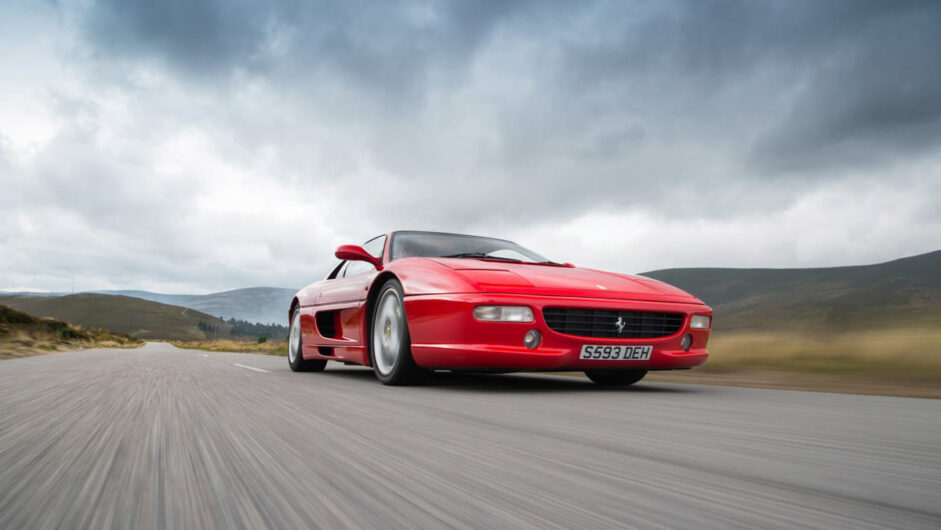
Ferrari F355
It might have looked superficially similar to the Ferrari 348 on the outside, but the F355 that debuted in 1994 was quite different under the skin. It turned the pretty but often derided 348 into one of the best sports cars of the 1990s in one fell swoop.
The F355 received a facelift inside and out, with a higher-quality cabin and curvier, more 90s-friendly lines externally, but the most significant changes were in the engine bay and under the chassis. The former received a displacement increase and a new five-valve head, while the latter received active dampers and improved underbody aero.
In concert, it resulted in a more powerful engine (while the open-gate manual gearshift was improved to be a little more usable when cold and a little more positive the rest of the time), but also a taming of some of the 348’s on-limit handling characteristics. To this day, the 355’s low-slung lines and buttressed engine cover still look rather fine, too.
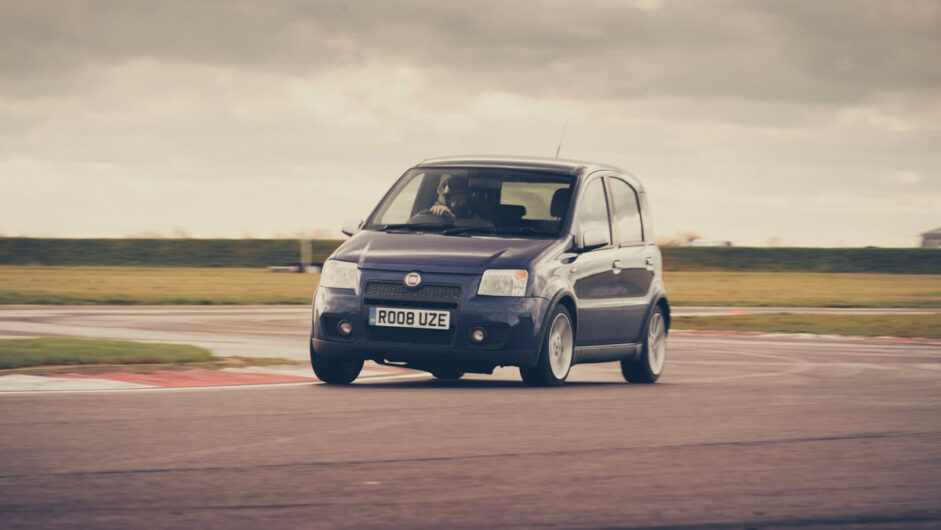
Fiat Panda 100HP
Fiat has made some excellent cars over the years but few that have lit our fire since evo has existed. One that categorically did was the Fiat Panda 100HP, which remains one of the best-judged and most affordable fun cars we’ve ever driven.
Best of all, there are no huge caveats to the 100HP. Sure, the ride quality isn’t great, but viewed in a modern context it no longer seems as punishing as it once did, even if the limited wheel travel means tyres can leave the tarmac quite frequently on a bumpy road. There’s not much steering feel either but plenty of precision, and its narrow width gives you more than enough space in your lane even on tight mountain roads.
The revvy twin-cam 1.4 and short-throw gearbox are a laugh too, while the rest is pure Fiat small-car common sense. There’s good space inside, it doesn’t use much fuel, it’s cheap to run and insure, and it looks fantastic with a perfect stance over its 15-inch wheels. In terms of modern equivalents, only the VW Up GTI really gets close.
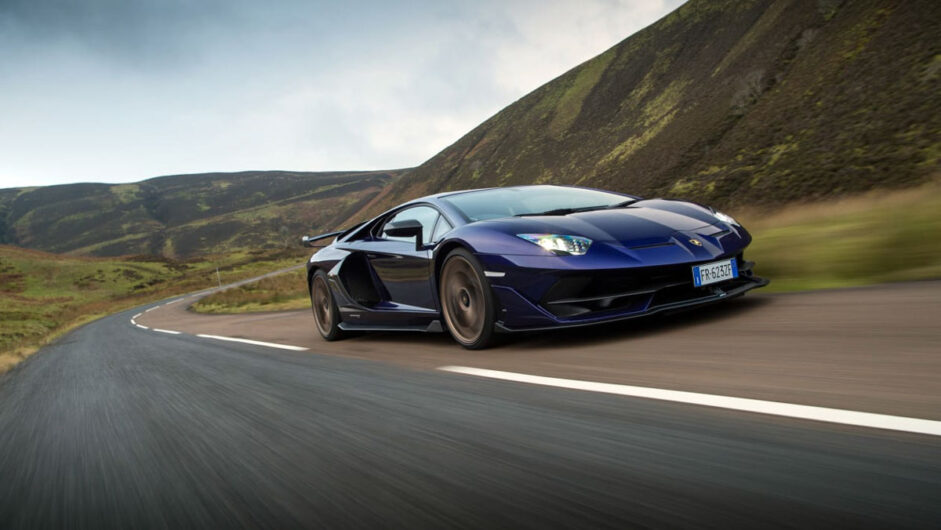
Lamborghini Aventador SVJ
It took a few years for the Aventador to come into its own, particularly given its predecessor, the Murcielago, was something of a revelation from the off, but with the SVJ, Lamborghini gave the model its best chance to shine.
That’s not to say it’s perfect, and it’s not the car its smaller Huracan Evo RWD sibling is. Lamborghini’s automated manual gearbox detracts from its usability and enjoyment – it does come into its own changing up at full throttle and maximum revs, but the car’s performance is so high that opportunities to do so are rare. Visibility and comfort are also miles away from supercars from McLaren or Ferrari, and it feels terrifyingly wide on public roads.
But in the right scenario, good lord is the SVJ exciting. There’s still nothing quite like a highly-strung naturally-aspirated V12 for thrilling levels of sound and performance, and on a track you can start to explore the surprisingly accessible balance – there’s a well-crafted chassis under the look-at-me styling. Whatever replaces it will be fascinating indeed.
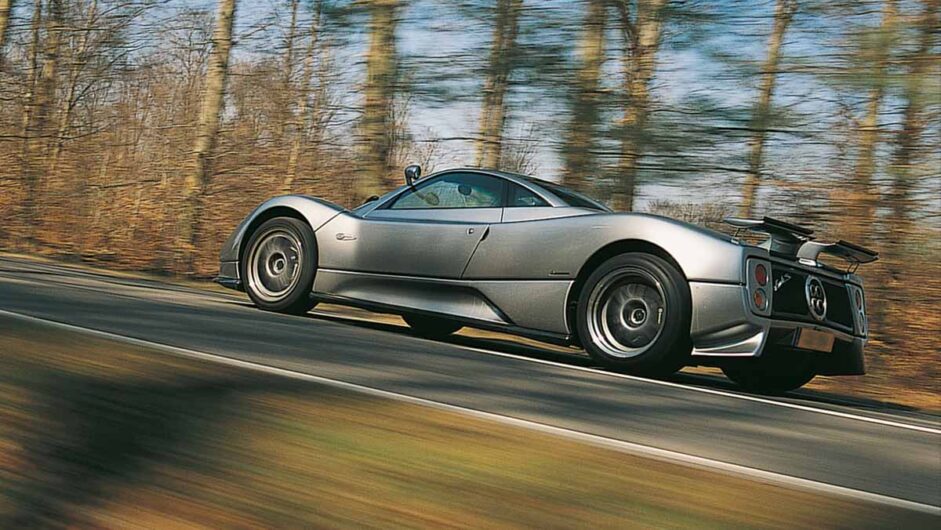
Pagani Zonda
What defines a supercar? High performance has to be a factor, as does truly eye-catching styling. It should ideally be both capable and thrilling to drive in equal measure, have a degree of exclusivity, and feel crafted by people who care about every single detail – because when you’re spending supercar money you expect a genuinely super car.
The Pagani Zonda could be used to represent the supercar in a dictionary. Even the earliest C12, more than 20 years old now, and developing by today’s standards a modest 395bhp from its Mercedes-sourced V12, fits the bill, but styling got progressively wilder and its V12s more powerful as the years went on.
It was no mere styling exercise either – Zondas have always been great to drive, and with fewer than 200 examples produced to date, it’s certainly exclusive. And crafted by people who care about every single detail? You’ll find few in this industry more passionate about their product than founder Horacio Pagani.
This article originally appeared at evo.co.uk
Copyright © evo UK, Dennis Publishing

